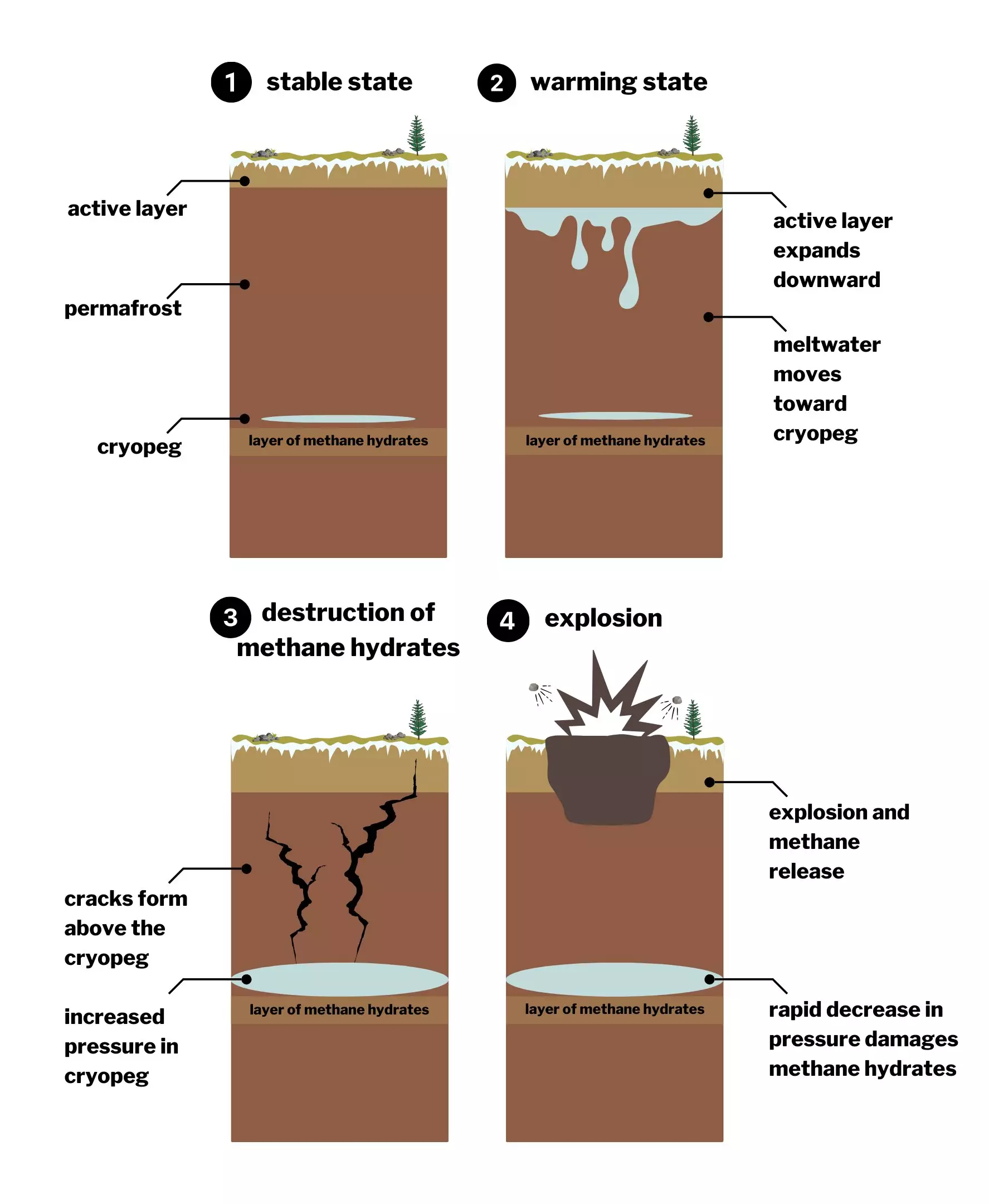The Yamal Peninsula, nestled in the Arctic expanses of North-Central Russia, has found itself at the heart of climate discussion in recent years, particularly following the emergence of peculiar craters in its permafrost. First identified in 2014, these craters have baffled scientists and the public alike, leading to various theories regarding their origin. However, a recent study shed new light on their formation, revealing a complex interplay between geological conditions and climate change that facilitates the rapid release of volatile methane gas. This article will unpack the findings of the study while contemplating the broader implications of such phenomena on our understanding of permafrost regions and climate dynamics.
Initially, reports concerning these craters suggested that they were simply the result of melting permafrost. It seemed plausible that as the frozen ground thawed due to rising global temperatures, natural gas reserves might ignite. Over the last decade, multiple craters emerged, deepening the intrigue surrounding their genesis. Yet, the newly published study in Geophysical Research Letters challenges these assumptions. Researchers discovered that this was not merely a reaction to permafrost thawing; it involved dynamic pressure changes deep beneath the surface, allowing methane gas to escape explosively.
Ana Morgado, a chemical engineer from the University of Cambridge, posits that the conditions conducive to such phenomena are atypical and require specific geological attributes to occur. The research underscores the uniqueness of the Yamal Peninsula’s geophysical environment and its susceptibility to the forces of climate change.
The crux of the research involved discerning the mechanism behind the methane explosions. Researchers narrowed their investigation to ascertain whether these events were triggered by chemical reactions akin to an explosion or by physical processes—essentially, the same principles that lead to a bicycle tire bursting when overinflated. It became evident that chemical reactions were not the culprits. Instead, the explosions could be attributed to a physical source: osmotic pressure.
Osmosis, as understood in simple terms, is the movement of fluids across a barrier to equalize concentrations. In this specific case, the permafrost acted as an osmotic barrier at various depths, especially around the salinity-intensive cryopegs—unfrozen saline layers trapped within the frozen ground. Warming exposure from climate change has begun altering these conditions, jeopardizing the stability of the methane hydrate layer embedded beneath the cryopegs.
Delving deeper into the study, it becomes clear that climate change is an essential player in this phenomenon. The warming climate prompts the active topsoil layer to thaw more extensively, forcing meltwater into the cryopegs beneath the surface. However, these pockets of salty water, which are already maximized in capacity, cannot accommodate the extra influx of water. The pressure builds up over time, leading to cracks that allow methane gas to escape explosively.
This relationship between thawing permafrost and methane release has significant repercussions. As warming trends continue, the cycle of pressure buildup and explosive release could lead to further destabilization of methane hydrates globally, not just in specific regions like Yamal.
The implications of these findings extend well beyond the Yamal Peninsula, carrying potential global ramifications. Methane is a potent greenhouse gas, believed to be significantly more impactful on global warming than carbon dioxide in the short term. As the Arctic continues to warm and permafrost regions undergo transformation, the fear of increased methane emissions becomes palpable. This cycle could accelerate the pace of climate change, underscoring the urgent need for research into the dynamics of permafrost and its interaction with climate change.
Morgado’s assertion that these craters are part of a unique geological phenomenon should encourage a reassessment of how we view the Arctic permafrost’s role within the global climate system. Places like the Yamal Peninsula can serve as bellwethers for broader climatic shifts, reminding us that while some environmental changes unfold gradually, others may have sudden, catastrophic consequences.
The research surrounding the Siberian craters presents a compelling narrative about the interplay between climate change and geological processes. As warming temperatures continue to mold the Arctic landscape, it becomes increasingly critical to keep studying these changes and their effects on the environment. Through comprehensive investigations, we can hope to mitigate the risks and understand the broader implications of these natural phenomena. Understanding the dynamics of methane release is pivotal as we strive for climate resilience and a sustainable future. The enigma of the Yamal craters thus serves as a reminder of the complexities of climate interactions, urging both scientific inquiry and prudent environmental stewardship.



Leave a Reply